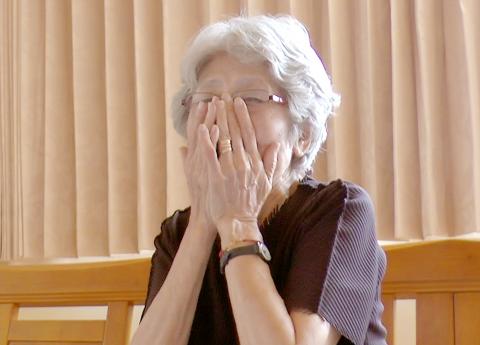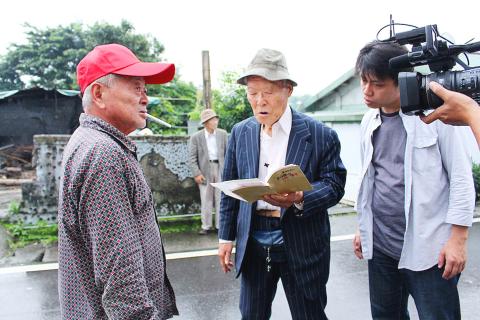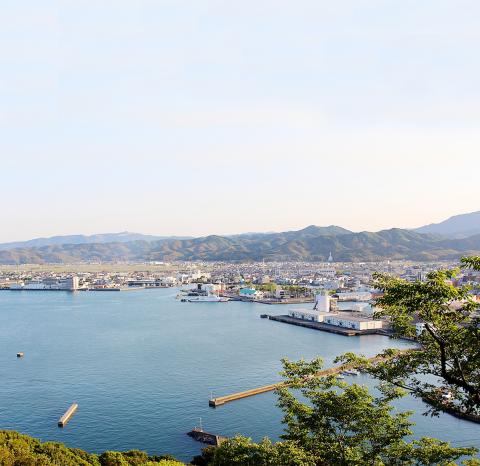One episode in Taiwan’s forgotten, even deliberately buried, past has been recovered in the documentary Wansei Back Home (灣生回家). It starts in Jian Township (吉安), Hualien County, where few can recall life during the Japanese colonial era, when the place was known as Yoshino Village. It was one of the first Japanese settlements in Taiwan, built to encourage Japanese families to emigrate to the new colony.
Japanese settlers came with everything they had and a one-way ticket. They farmed, went to school and gradually made Taiwan their home. Then in August 1945 Japan surrendered to the Allies, ending World War II. More than 470,000 Japanese were repatriated, with over half that number accounting for wansei, or Japanese citizens born in Taiwan during the colonial period from 1895 to 1945.
These wansei, many of whom considered Taiwan their home, were met with discrimination and hostility upon returning home to post-war Japan.

Photo courtesy of Activator Marketing Company
Wansei Back Home began as a personal project when Mika Tanaka first visited Jian in 2003, when she was determined to learn more about her late grandmother, who had kept her wansei identity secret.
Since then, Tanaka has found over 200 survivors, most in their 70s and 80s, across Japan and Taiwan. She teamed up with a Taiwanese film crew, including director Huang Ming-cheng (黃銘正) and composer Baby C (鍾興民), and produced an intimate, heartfelt portrait of the wansei through interviews, old photographs, archival footage and animated sequences.
As the wansei visit their childhood homes, it immediately becomes apparent that they’ve maintained a deep connection to Taiwan.

Photo courtesy of Activator Marketing Company
Eighty-eight year-old Masaru Tominaga, for example, can still speak Hoklo and sing old Taiwanese ballads such as Flowers in the Rainy Night (雨夜花). His home in Tokushima is crammed with books about Taiwan. During his trip to Hualien, the octogenarian bursts into tears when he learns that all his old friends have passed away.
Kosei Matsumoto, who also visited Hualien, says that growing up the child of farmers in Taiwan made it extremely difficult to assimilate into Japanese society. Nobuko Takenaka says repatriation was particularly daunting for her family, who had settled in Suao for three generations before the end of World War II.
Eighty-five year-old Taeko Iekura agrees. However, she adds that she has come to terms with the fact that her birth in Taiwan has forever branded her a foreigner in Japan.

Photo courtesy of Activator Marketing Company
Although many wansei recall with nostalgia their life in Taiwan and the hardship and poverty they faced after they arrived in Japan, the documentary largely avoids direct criticism.
Iekura says that even though her father worked as a government official at the Office of the Governor-General of Taiwan, her family had no place to live after returning to Japan and were forced to seek shelter at different temples.
With its rarely discussed and obscure subject matter, Wansei Back Home calls out for deeper treatment than is offered here. Nevertheless, the film makes an adequate attempt at rediscovering personal histories and serves as a starting point for those interested in examining more about the past before those who can narrate it first hand disappear.

As I finally slid into the warm embrace of the hot, clifftop pool, it was a serene moment of reflection. The sound of the river reflected off the cave walls, the white of our camping lights reflected off the dark, shimmering surface of the water, and I reflected on how fortunate I was to be here. After all, the beautiful walk through narrow canyons that had brought us here had been inaccessible for five years — and will be again soon. The day had started at the Huisun Forest Area (惠蓀林場), at the end of Nantou County Route 80, north and east

Specialty sandwiches loaded with the contents of an entire charcuterie board, overflowing with sauces, creams and all manner of creative add-ons, is perhaps one of the biggest global food trends of this year. From London to New York, lines form down the block for mortadella, burrata, pistachio and more stuffed between slices of fresh sourdough, rye or focaccia. To try the trend in Taipei, Munchies Mafia is for sure the spot — could this be the best sandwich in town? Carlos from Spain and Sergio from Mexico opened this spot just seven months ago. The two met working in the

Exceptions to the rule are sometimes revealing. For a brief few years, there was an emerging ideological split between the Democratic Progressive Party (DPP) and Chinese Nationalist Party (KMT) that appeared to be pushing the DPP in a direction that would be considered more liberal, and the KMT more conservative. In the previous column, “The KMT-DPP’s bureaucrat-led developmental state” (Dec. 11, page 12), we examined how Taiwan’s democratic system developed, and how both the two main parties largely accepted a similar consensus on how Taiwan should be run domestically and did not split along the left-right lines more familiar in

A six-episode, behind-the-scenes Disney+ docuseries about Taylor Swift’s Eras Tour and Rian Johnson’s third Knives Out movie, Wake Up Dead Man, are some of the new television, films, music and games headed to a device near you. Also among the streaming offerings worth your time this week: Chip and Joanna Gaines take on a big job revamping a small home in the mountains of Colorado, video gamers can skateboard through hell in Sam Eng’s Skate Story and Rob Reiner gets the band back together for Spinal Tap II: The End Continues. MOVIES ■ Rian Johnson’s third Knives Out movie, Wake Up Dead Man